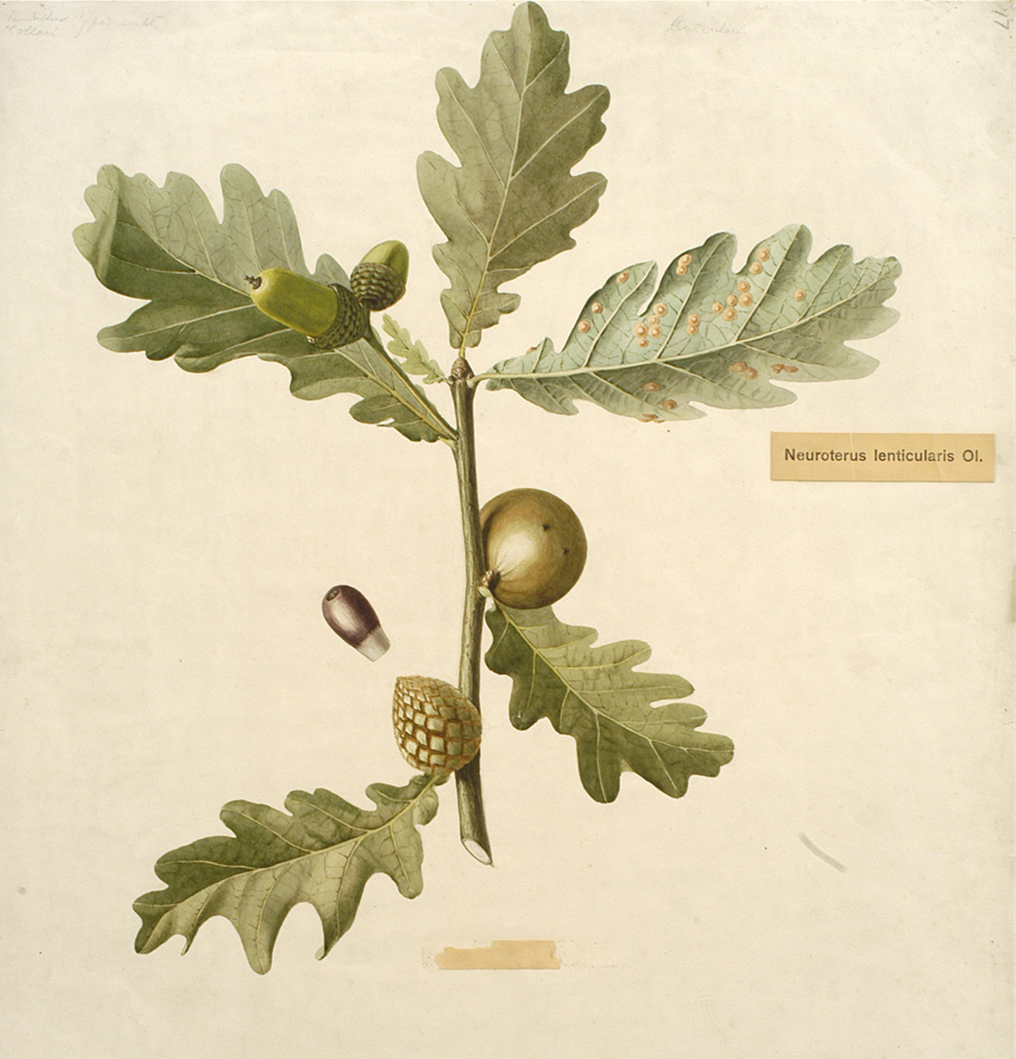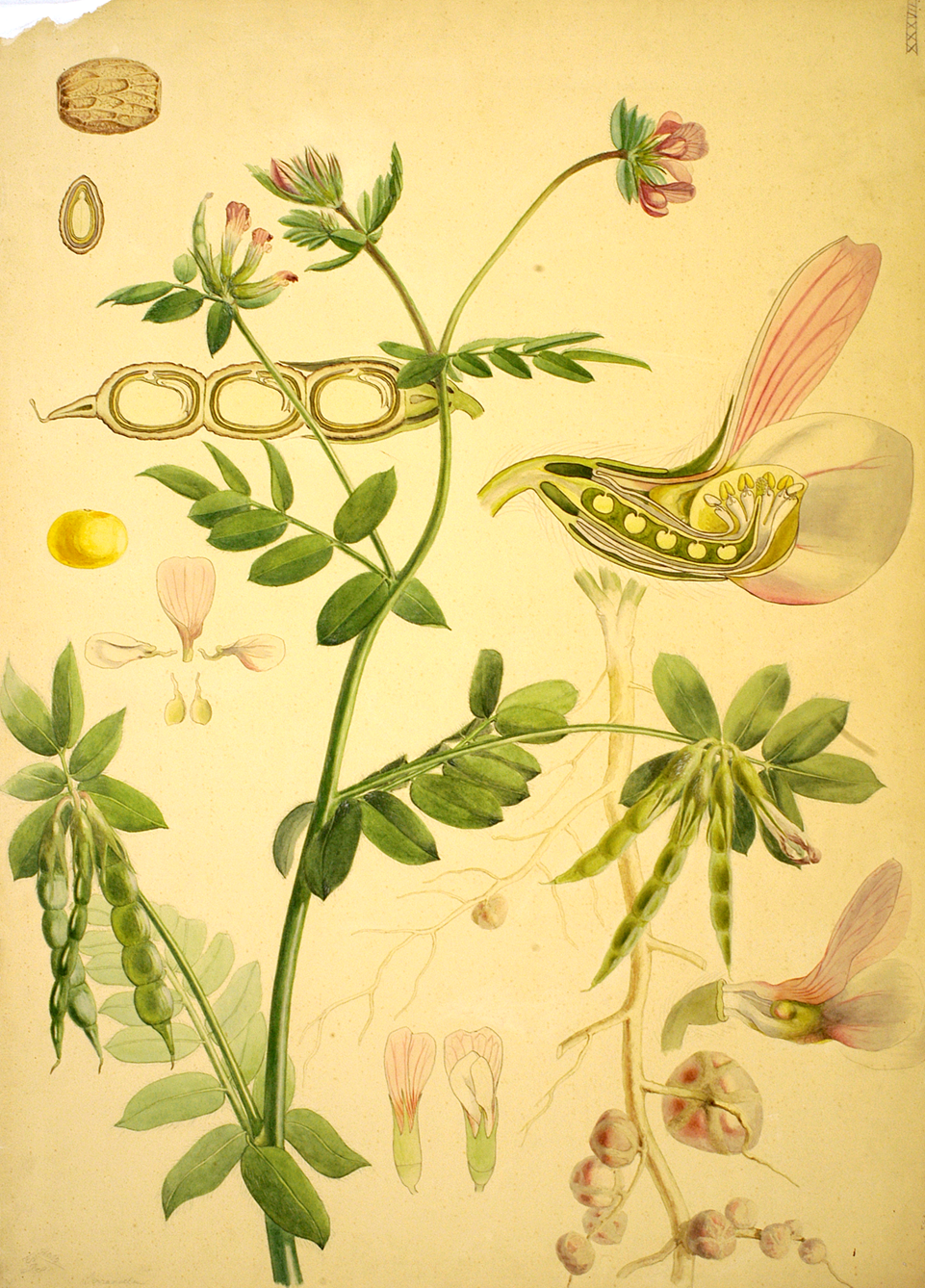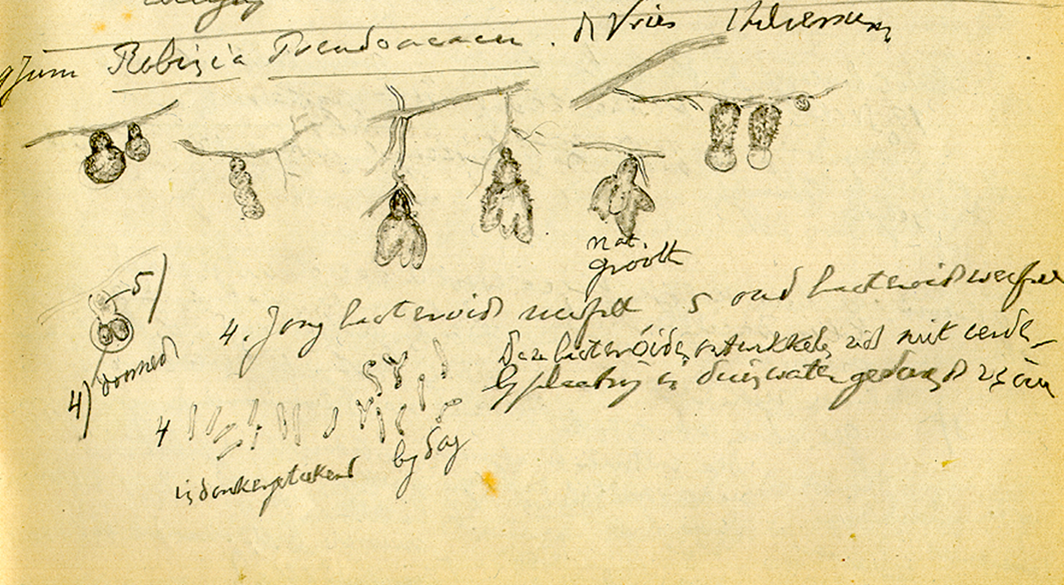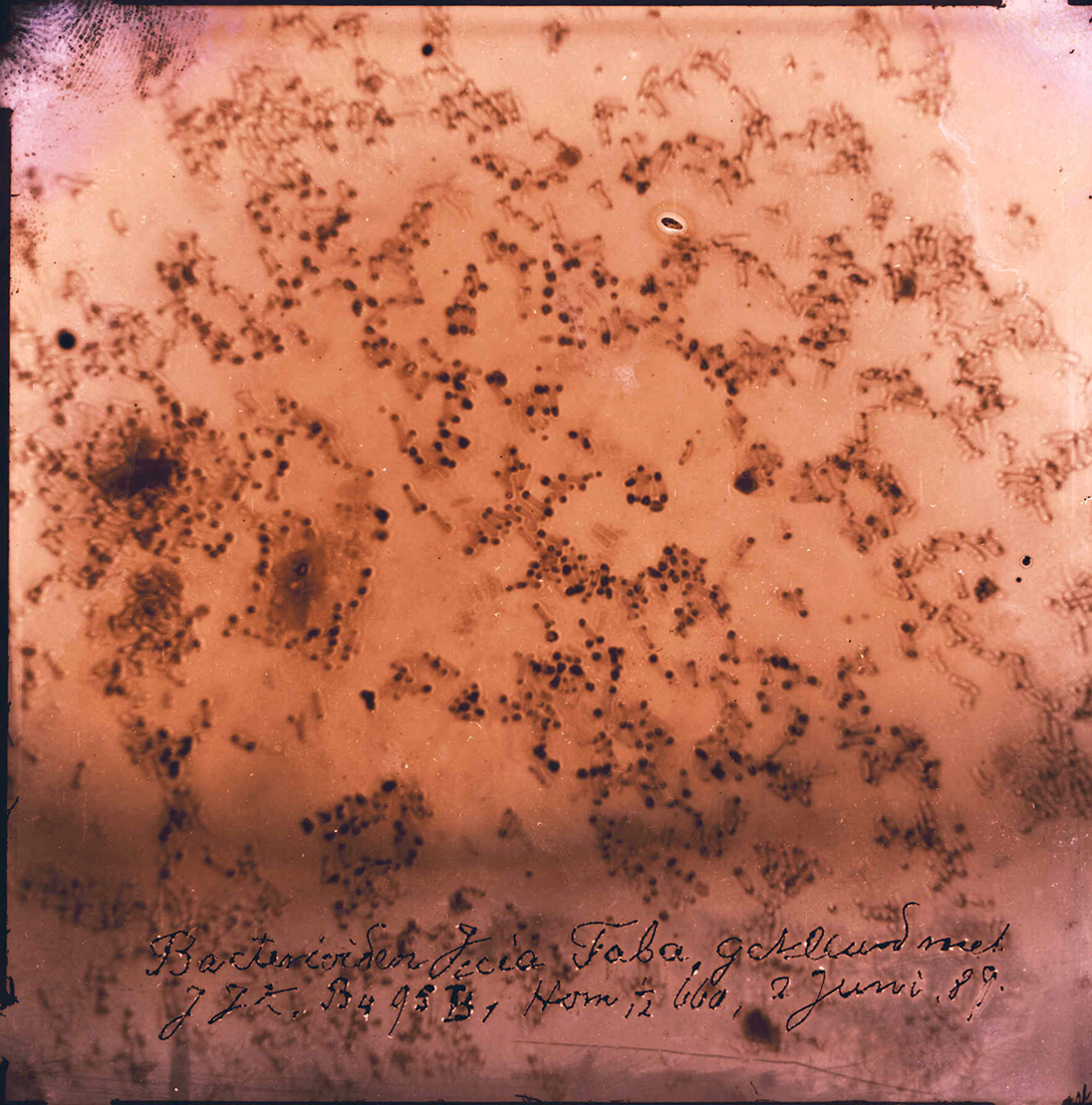Beijerinck wrote his doctoral thesis on the plant cancers caused by wasps called galls. Watercolours painted by his sister Henrietta show similar lumps on the roots of other plants.
Beijerinck became very frustrated when he could not find the wasp responsible for the “root galls” (figure 1). He then showed that the “galls” were actually full of nitrogen-fixing bacteria, not wasp larvae (figure 2). The "galls" now called root nodules, they are the reason why some plants, including peas and beans, improve soil fertility by taking nitrogen out of the air and releasing it into the soil in a form that other plants can also use. These bacteria are the force behind “green fertiliser”.

Figure 1. Watercolours painted by Henriëtta Beijerinck show galls on the leaves and stem of an oak twig (a) and nodules on the roots of a member of the pea family, Vicia faba (a and b).

Figure 1a. Watercolours painted by Henriëtta Beijerinck shows nodules on the roots of a member of the pea family, Vicia faba (a and b).

Figure 1b. Nodules on the roots of a member of the pea family, Vicia faba (a and b).

